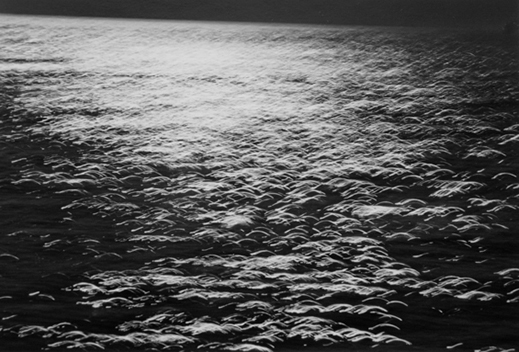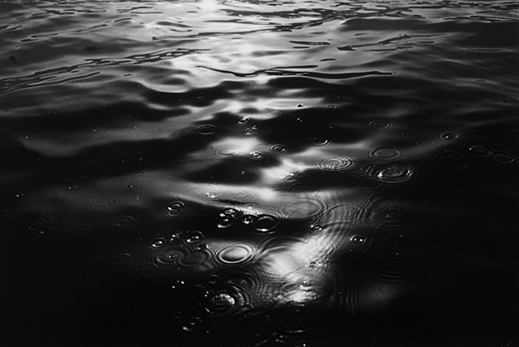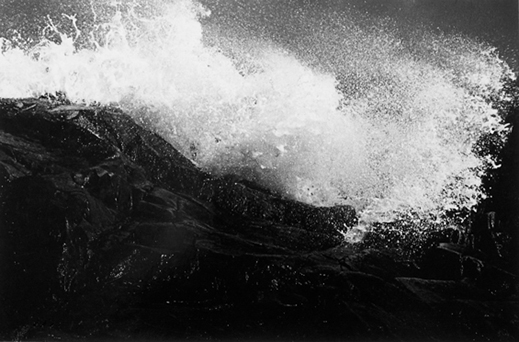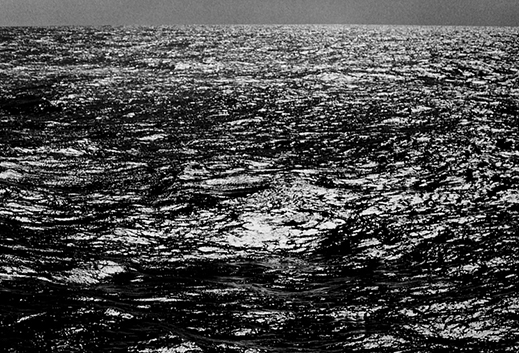 |
Focus features two in-depth reviews each month of fine art, architecture and design exhibitions and events at art museums, galleries and alternative spaces around Japan. The contributors are non-Japanese art critics living in Japan. |
|
|
 |
 |
 |
Getting under the Skin: Photography by Jun Morinaga at Gallery Bauhaus
Susan Rogers Chikuba |
 |
A quiet oasis for fine-art photography, gallery bauhaus opened its doors in 2006 and will mark its tenth anniversary in September. Photos by Susan Rogers Chikuba |
On any afternoon, visiting gallery bauhaus near Ochanomizu Station in Tokyo is a little like falling in love. There's a pulse of anticipation as you turn from a noisy thoroughfare onto a hushed slope that draws you upward. The lane has a warm, old-timey feel that's increasingly rare in this city -- a sense that this is a place where the past still intersects with the present. Kanda Myojin shrine lies just a block or two ahead -- it might be that the sanctuary lends some sacred spirit to its neighborhood.
A few quick strides uphill and there on the left, set back from its surroundings, stands bauhaus. It's a trim, attractive building whose sharp concrete frame is softened by cream-colored travertine steps, a picture window trimmed in wood, and a few carefully tended plantings. When I stopped by in February for Wave, an exhibition by photographer Jun Morinaga running through April 16, a simple wooden red heart hung from a spotlight above the gallery's sign -- a nod to Saint Valentine, perhaps.
 |
|
The shimmering surface of the ocean, alchemized to abstraction, seems to lift into the air. © Jun Morinaga, year unknown |
Curling silhouettes play on a field shaped by endless collisions. "If you were to peel off a layer of the ocean's surface like skin," Morinaga muses, "underneath you might find a pulsing membrane that envelops all life and death." © Jun Morinaga, 1976 |
Whenever you go to bauhaus, one of the first things you'll notice as you step inside is the music. Owner Tatsuo Kotaki, an accomplished photographer himself, puts as much care into its selection for each show as he does into deciding which works will hang where. For Morinaga's exhibition -- a collection of 44 monochrome images of ocean waves -- Kotaki chose the ambient, edgy soundtrack created by composers Robin Guthrie and Harold Budd for the film Mysterious Skin. It's an act of intuitive genius. (We're falling in love, remember?) Morinaga's images of the ocean's shifting surface, by turns stark, velveteen, misty, airborne, harsh, eddying and sun-dappled, are reiterated in Guthrie's reverb-soaked guitar as textural washes of synth float in and out over moody lifts and falls shaped by winding piano lines. These visual and aural imageries swell together into a larger experience that ebbs and flows as you move up and down through the gallery's two floors, and whether it's your heart or your brain or both that's been bewitched by now, it all makes perfect sense. The medium of seduction, after all, is the very fluidity of the ocean itself, and the invitation is to move beyond its complex surface and ride it to some deeper, more delicate point of discovery within.
 |
|
Black velvet waters are lit by a sinking sun. "On days of light rain," Morinaga writes, "ripples dance on the water surface, a spectacle I never tire of watching." © Jun Morinaga, 2000 |
Mesmerized by that idea, Morinaga, 79, began shooting these ocean images in the late seventies, around the time his meditative masterpiece River, Its Shadow of Shadows, now a collector's item, was published by Yugensha. Whereas those river scenes, shot in Tokyo in the early sixties, roiled in undercurrents of death -- poisoned fish and waterfowl, stagnant mud, decayed and decomposing matter and all manner of crusty, bubbly things -- and thus turned a baleful eye on our relationship with nature, in the sea Morinaga shows us both hope and awe. "Sometimes when gazing at the waves for a long time," he writes, "their movement and my sense of the universe merge. I lose track of where I am. It's as though heaven and earth fall away, and I become a single drop of water left to spin in a vast ocean." Morinaga honestly describes this as a fearful moment. Mystics understand it as groundlessness, a step closer to the divine.
 |
|
"My theme for these works," Morinaga writes, "is to capture in intimate detail some part of the natural energies that move across the ocean surface and manifest in forms we call waves." © Jun Morinaga, 1987
|
Shooting at high speed from shore or aboard a fishing vessel at distances of one to five meters and tight angles of 45 to 90 degrees, Morinaga brings water, light, and air up close and personal. The images loom archetypally, as though drawn from some greater unconscious. In one photograph, a sudden gust of wind whips a foaming funnel of white up to the sky; beyond it, a sun-brightened swell prevails, holding the thrust in counterbalance. In others, whole landscapes reside in the mottled and rippled patterns of shadows on the water's surface. And there are abstract images, too -- each so fragmented you only know this is the ocean from having seen it once before, in a dream. Collectors, take note: the works on display, photographed between the years 1976 and 2001, are vintage gelatin-silver prints developed by Morinaga's own hand.
 |
|
Scratched, rough, robust, and textured like slate. Many of Morinaga's images evoke feelings of déjà vu, or call forth associations with other, non-water elements. © Jun Morinaga, 1991 |
A few of the photographs include subjects other than water -- patterns of fish beneath the waves, for example, or bits of shoreline, the rocks like anchors that steady us from falling too deeply in. In the limited-edition, hand-numbered monograph of the full series, these last examples belong to the heading "Creation." In the final chapter, "All Things Change," and on the gallery's walls as well, we are brought home again with imagery of land-licking waves, rain on the lens, and finally, the sun breaking through a dark bank of clouds, caressing the ocean's surface, and our skin, softly.
© Jun Morinaga, year unknown |
Morinaga will be joined by Chotoku Tanaka, best known for his street photography shot with a Leica, for a talk at bauhaus on March 12 at 7 p.m. Advance reservations are required; see the gallery website for details. But do catch the exhibition, a rare opportunity to see up close these hand-printed works of one of the masters of our time.
In the basement gallery you can order an espresso or a cup of black or oolong tea and sit for a while, savoring the art and a moment of serenity. Photo by Susan Rogers Chikuba |
|
All black-and-white images are taken by the artist and are provided courtesy of gallery bauhaus.
|
 |
 |
Susan Rogers Chikuba
Susan Rogers Chikuba, a Tokyo-based writer, editor and translator, has been following popular culture, architecture and design in Japan for three decades. She covers the country's travel, art, literary and culinary scenes for domestic and international publications. |
|
 |
|